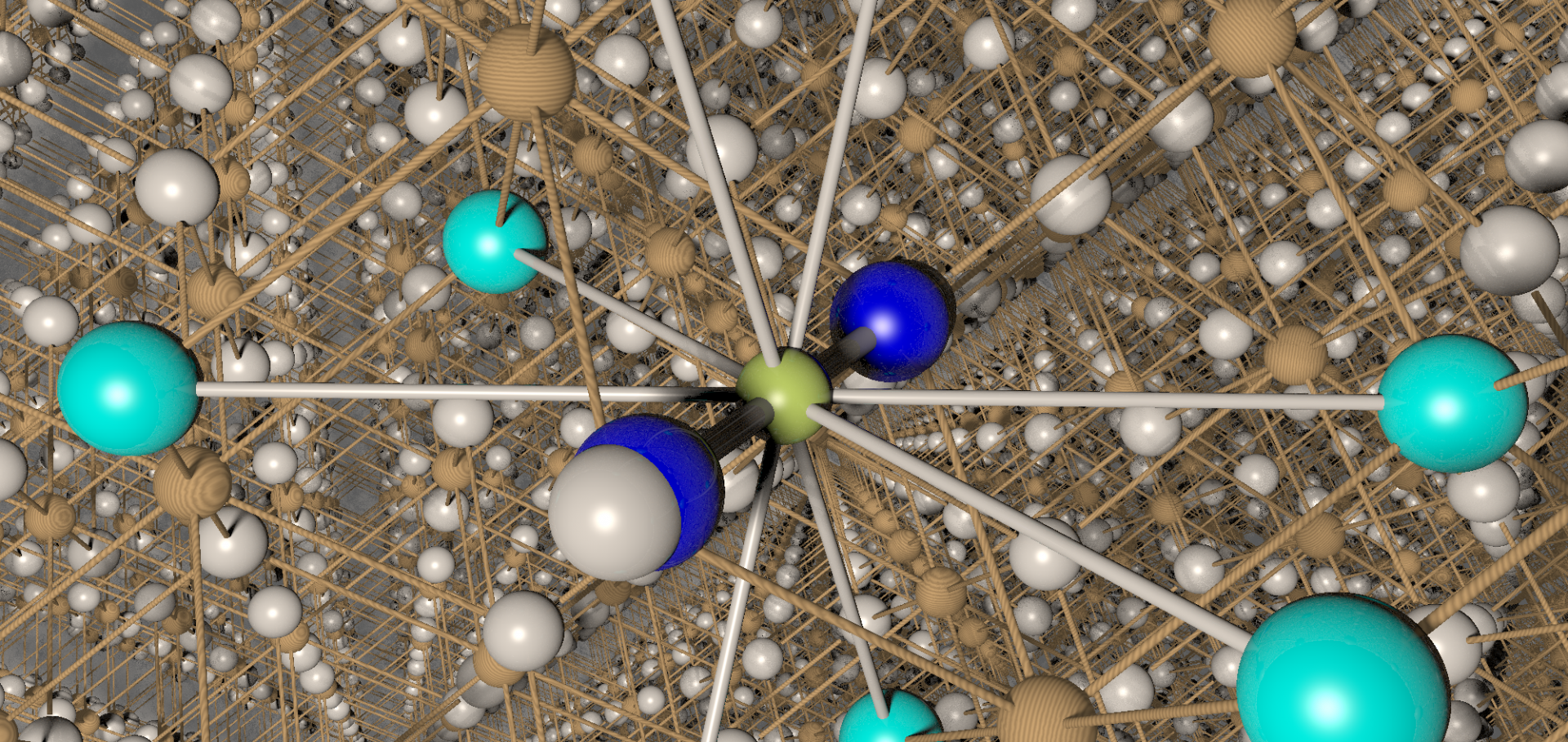Stability of the vortex lattice in ET superconductors studied by mu SR
SYNTHETIC MET 103:1-3 (1999) 1925-1928
Abstract:
Muon-spin rotation (mu SR) measurements have been used to study the vortex lattice and its instabilities in the organic superconductors kappa-ET2Cu(SCN)(2) and beta-ET2IBr2. We ascribe the field- and temperature-dependent destruction of the vortex lattice to the large anisotropy found in these materials.Anisotropic polaron motion in conducting polymers studied by muon spin relaxation
SYNTHETIC MET 101:1-3 (1999) 323-324
Abstract:
Muon spin relaxation has been used to study the anisotropic motion of muon-generated negative polarons in polyaniline and polypyridine. Fast on-chain diffusion is found to become limited by 10 meV phenylene librations above about 150 K in polyaniline, whereas the rapid on-chain diffusion is maintained to much higher temperatures in polypyridine due to its more rigid structure.Muon-spin-relaxation studies of magnetic order and dynamics of the (formula presented) ruddlesden-popper phases (formula presented) (formula presented) nd, sm, eu, gd, tb, dy, and ho)
Physical Review B - Condensed Matter and Materials Physics 60:17 (1999) 12286-12293
Abstract:
Zero field muon spin relaxation (μSR) has been used to study the magnetic properties of (Formula presented) Ruddlesden-Popper phases (Formula presented) where (Formula presented) Nd, Sm, Eu, Gd, Tb, Dy, and Ho. The results show that the size of the lanthanide ion is crucial in determining the magnetic state and dynamics of the system. Because muons are implanted throughout the bulk of the sample, impurity phases contribute only according to their volume fraction. Hence in the case of biphasic samples the data are dominated by the majority phase. Although none of our samples has a ferromagnetic ground state, colossal magnetoresistance (CMR) is observed over a wide temperature range, (Formula presented) for both the Pr and Nd compounds. The μSR results show that the magnetic transition in both these samples is broad. Ordered, but fluctuating, regions form at (Formula presented) the reported onset of CMR, with the fluctuation rates gradually decreasing with temperature. Even at 5 K, fluctuations are still observed. The ferromagnetic double exchange between Mn ions becomes weaker as the size of the lanthanide ion decreases. (Formula presented) shows weak clustering at a much reduced temperature of 30 K whereas (Formula presented) shows spin-glass-like behavior. For all lanthanide ions smaller than Eu no long range magnetic ordering of the spins is observed and the observed relaxation rates follow an activated dependence. The technique allows us to extract the effective activation energy associated with the magnetic fluctuations of the lanthanide moments in samples with (Formula presented) Eu, Gd, Tb, Dy, and Ho. CMR is only observed where μSR measurements show a broad magnetic transition associated with fluctuations. We therefore believe that these fluctuating ordered regions are responsible for the extended temperature regime in which CMR has been observed in these nonferromagnetic (Formula presented) Ruddlesden-Popper phases. © 1999 The American Physical Society.Muon-spin-rotation studies of organic magnets
Philosophical Transactions of the Royal Society A Mathematical Physical and Engineering Sciences 357:1762 (1999) 2923-2937
Abstract:
A muon is an unstable spin-1/2 particle with a lifetime of 2.2 μs. Beams of spinpolarized positive muons can be prepared at accelerator facilities and then subsequently implanted in various types of condensed matter. Both the time and direction dependence of the subsequent positron emission can be monitored. This allows the precession and relaxation of the average muon-spin polarization to be measured and the local magnetic field in the sample to be directly inferred. The muon thus behaves essentially as a 'microscopic magnetometer' and is used to follow the magnetic order at a local level and to investigate both static and dynamic effects. This article outlines the principles of various experimental techniques that involve implanted muons, and reviews some recent experimental data on organic and molecular magnets.Pulsed-magnetic-field measurements of hall potential oscillations in (formula presented) within the quantum hall regime
Physical Review B - Condensed Matter and Materials Physics 59:16 (1999) R10417-R10420


